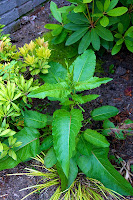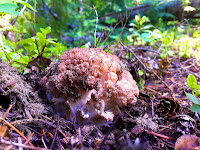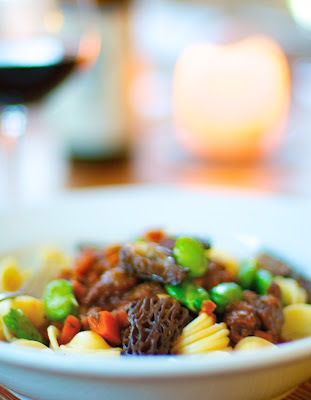It rained last night. Alas, Seattle didn’t break its record for longest stretch without precip—51 days in the summer of 1951—but we came close at 48 days. Let the mushrooms rejoice.
A professional forager I know likes to stake out contrarian positions on just about every aspect of his profession. Rain, or lack thereof, is one of his favorite topics. When it comes to fungi, he says temperature is more important than moisture for most of the edible species.
This is a nuanced argument, so stay with me here. He concedes that moisture is important for volume, but it doesn’t affect the timing as much as most recreational mushroom hunters believe. Yes, there are individual species that won’t fruit without a timely rain (take a bow, fall mountain porcini), but while many hunters wait for their beloved precipitation, their patches are right on schedule, or at least quality patches in good habitats are on schedule. Marginal patches will always be adversely affected by any number of poor conditions.

The bottom line, he says, is that weather in the Pacific Northwest is more consistent than most people think, despite the usual claims of oddball this-and-that. “We get rain in June and our Septembers are usually nice.” It rarely rains in August and November is always wet.
He proved his theory by taking me to a lobster mushroom patch at the end of August, just when Seattlites started getting an inkling that this dry spell was making a run for the record books. Despite the parched conditions, the lobsters looked prosperous—not as abundant as in some years, but large, bug-free, and delicious. (We also picked white chanterelles, which I’ll post about another day.)
I wrote about lobster mushrooms in my September column for Seattle Magazine. Every season they rise a little more in my estimation, and my own personal appreciation seems to be in parallel with the larger culinary community because you see them on more and more restaurant menus year after year—and their value in the marketplace continues to grow.
Pan-seared Scallops with Lobster Mushrooms, Lobster Sauce & Indian Spices
To make this harvest season dish with its colors of late summer and early fall, plate a trio of pan-seared scallops over a bed of roasted vegetables and fungi—in this case, cubed butternut squash, sliced leeks, and diced lobster mushrooms—and punch it up with a drizzle of lobster sauce—that is, sauce made from the crustacean. With their hint of the sea, I like pairing lobster mushrooms with seafood.
I made a simple lobster sauce with lobster stock I had in the freezer. As a cup of the stock warmed in a pot, I made a quick roux with two tablespoons of melted butter and two tablespoons of flour, whisking until the roux began to darken to a nice golden color. Then I stirred in the stock until it was saucy. This made enough sauce for two. I roasted the squash, leeks, and mushrooms with olive oil and seasoned with salt and pepper and a healthy sprinkling of garam masala, baking at 400 degrees until the edges of the leeks and squash browned lightly. A scattering of chopped fresh cilantro completed the dish.


























